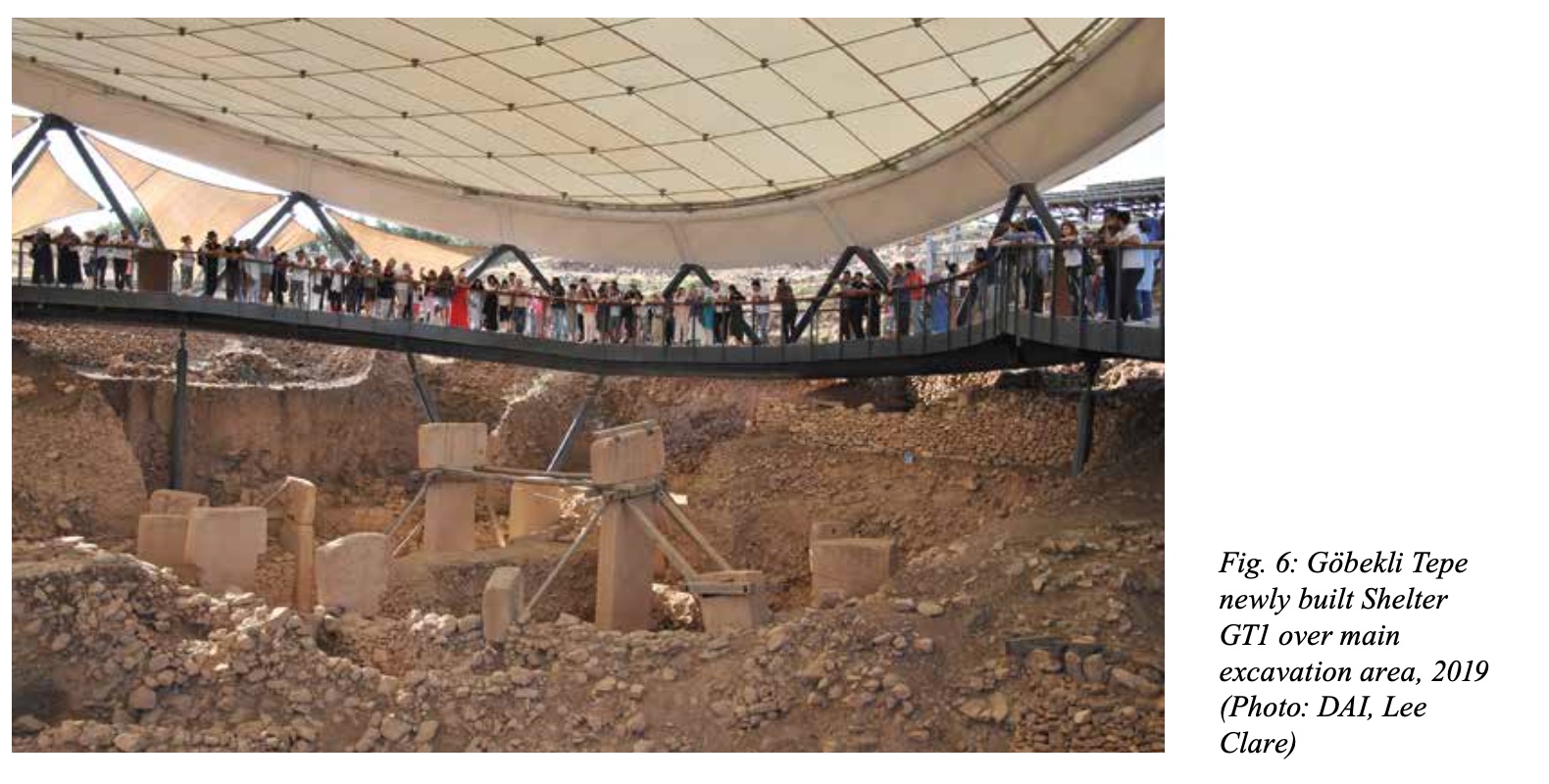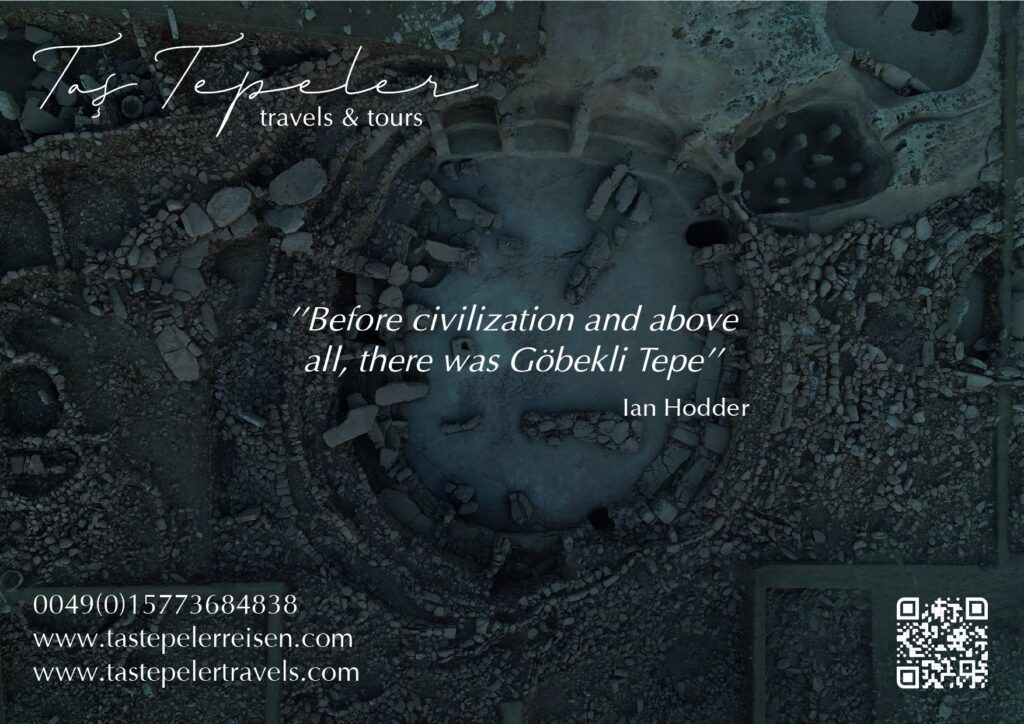
Göbekli Tepe’s re-discovery in 1995 was a scientific sensation, especially in the field of Neolithic research. How- ever, public awareness started when Klaus Schmidt’s book “Sie bauten die ersten Tempel” was published in 2006, accompanied by more popular publications in magazines like Geo and national Geographic with spectacular night sight photography. Since then the public debate around the site on the one hand, and scientific research on the other, have taken quite different trajectories: While the popular narrative around Göbekli Tepe was built around a central neolithic meeting place with lavish work feasts, including beer brewing and the beginning of agriculture, the ongoing archaeological fieldwork is now revealing a much more. The UNESCO World Heritage Site of Göbekli Tepe is located in south-eastern Turkey, about 13 km northeast of Şanlıurfa and 2.5 km east of Örencik village (fig. 1). Göbekli Tepe was discovered in 1963 the frame of an archaeological survey project undertaken by the university of Istanbul and the orient Institute at the university of Chicago. field and laboratory research was initiated in 1995 under the di- rectorship of Harald Hauptmann (then first director of the Istanbul department at the German Archaeological Institute) in close collaboration with the Şanlıurfa Museum. First excavations focused on the Southeast Hollow, also referred to as the Main excavation Area. following the appointment of Klaus Schmidt as the new excavation director (kazı başkanı) in 2006, excavations were extended to the north-western part of the site (nW-Mound and nW-Hollow) from 2009/10. following the untimely death of Klaus Schmidt in 2014, the directorship of the site passed to the Şanlıurfa Museum and in 2020 to Necmi Karul (Istanbul university). The current German (dAI/dfG) research project is coordinated by Lee Clare (DAI Istanbul), in cooperation with the Şanlıurfa Museum. It is overseen by an academic advisory board. Between 2017 and 2019 two permanent shelters were constructed over the Se- and the nW-areas of the site. In the run-up to the construction of the shelters deep soundings were excavated that revealed the complex and long history of the neolithic settlement. The site was inscribed on the uneSCo World Heritage list in 2018 under criteria: i, ii, and iv.2 complex story.


